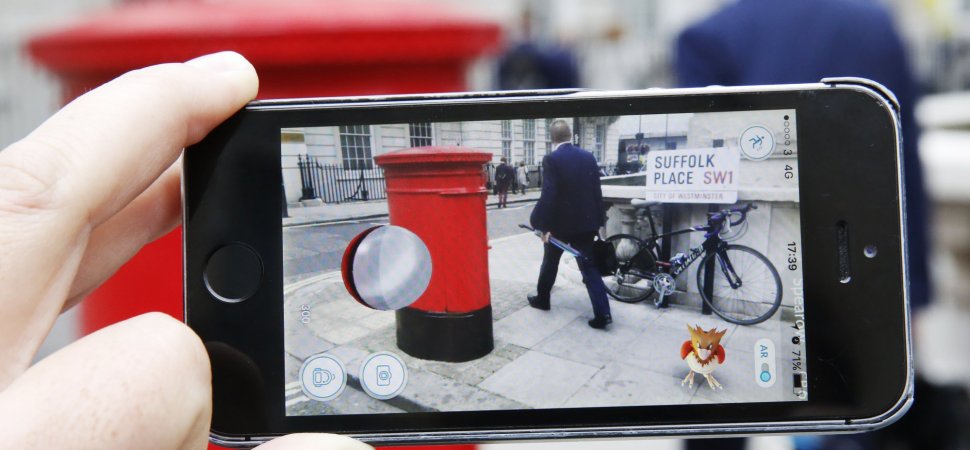|
If your business came from humble beginnings or has gone through troubled times that are forever on your mind, the feeling that its history is likely to impede your chances of making things a success is entirely understandable.
In reality, the history of your business simply isn’t that important. Sure, pedigree and proof that you’ve ‘been there, done it’ is a nice thing to say to prospective customers, but few will use those things as the sole reason for choosing your product or service. What’s more, the history of your company won’t help you find or lose customers; it just doesn’t have a bearing. Just as a fabulous whisky may have matured in the most unlikely of places, the origins of your business are irrelevant. What matters? A solid marketing plan. Here’s why. 1. It helps you strategize Marketing plans, by their very nature, are strategic. They force the author to think ahead and consider the effects of promotional activity on both sales and the public image of the company. Big ideas fail without a plan, and your marketing plan is the one thing that will drive innovation and help you meet sales targets. 2. It helps you formalise ideas If you’re embarking on a new era for the business – perhaps replacing an old product with something fresher – the process of writing a marketing plan will help you formalise the idea behind the new development. You’ll spot areas you’ve not considered that relate to how it will be perceived which will in turn help you build the perfect ‘new thing’ for your business. 3. It gets you used to working to timescales Businesses that have been around for some time often fall into the trap of becoming too cozy. Existing customers continue to pay bills and there always seems to be a surplus in the bank account. That can lead to timescales for new developments and initiatives slipping and, before you know it, the entire organisation grinding to a halt. Great marketing plans are based on achievable timescales for promotional activity. By developing and adhering to those timescales, your business will automatically adopt the very valuable habit of getting things done on time, thus hitting deadlines and continuing to grow. 4. It’ll help you get financing Once you know what you need to do, marketing-wise, you can identify areas in which you’ll require financial assistance. No bank manager or investor will hand over penny if you can’t present a plan that details exactly what you intend to do with their money. With a marketing plan, you can do just that. 5. It aligns marketing objectives with business strategy As daft as it sounds, marketing and business strategy are often far removed from one another. This happens when there is no plan for the former. In such instances, costly adverts, trade shows and other forms of promotion are undertaken, but they bear no relation to the strategy of the business. As a result, they ultimately fail to deliver any meaningful return on investment. With a marketing plan, organisations can align the overall goals of the business with marketing output. And that’s exactly how it should be. 6. It helps you develop an enviable public personal Ok, so your business went through that torrid time three years ago, during which negative coverage of the events reached the press. But that’s past history – it’s time now to rebuild the public image of the company, and you’ll only do that with a proper marketing plan. By establishing the business as a trusted thought leader, your competitors will soon strive to look like you. ConclusionYour business can survive with its past history, no matter how turbulent or scarring. It can’t survive without a marketing plan. I hope this post has prompted you to start writing your own right away. Source: http://www.business2community.com/marketing/6-reasons-marketing-plan-important-history-business-01602194#pLkFj3Zkpwrw9Xwd.97 How Simple Design Solutions Can Improve Your Business’s Email Marketing Campaigns [Infographic]7/21/2016 By Matthew Zajechowski July 19, 2016
Many email marketing campaigns fail to live up to expectations for one reason or another. So what can business owners do when this happens? The key to getting past a failed email marketing campaign is to come away with an understanding of why people didn’t engage with your email marketing. Once you have that information, you can re-design your emails so that your audience will more actively engage with your emails. How can you go about doing this? One way is by using heat map software to analyze your email marketing campaigns. Easy SMTP and computational neuroscience firm, EyeQuant, recently teamed up to use specialized heat map software to evaluate a number of email marketing campaigns. By using the heat map software to analyze these email marketing campaigns, they could have a better idea of how design plays a factor in creating eye-catching emails that people actively engage with. They took the results of their research and made a very visually stunning infographic, seen here. Each of the email campaigns analyzed were rated on three different scores. They scored on clarity, another on excitingness and another on how well it grabbed the attention of the users. The software also allowed them to anticipate what people either liked or disliked in each campaign. Each campaign was unique, so it wasn’t justlooking at the same type of campaign over and over. They analyzed email marketing from an email advertisement, a trade publication, a B2B email, a financial services email and a product description email. For each email marketing campaign they analyzed what went wrong and gave pro tips on how they would fix each issue. There are many interesting and actionable takeaways presented at the conclusion of the graphic:
By Roberto A. Ferdman June 23, 2015 Timing is everything. (Patrick George/The Washington Post)The other night I was eating a plate of noodles, and enjoying it. I was out to dinner with a friend, hunched over a meal we had been planning for weeks. The restaurant was newly opened and highly regarded. Life was good. And the food was great. But then it happened. Again. "Are you done with that?" the server asked, fingers already comfortable with the rim of my plate. "Can I get it out of your way?" Yes, I had finished eating, because I am a vacuum; there was no food left in front of me. But my friend had not. His meal was only half-consumed. "No," I said. "We're not done eating." Without my permission, restaurants have abandoned, or simply overlooked, a classic tenet of service etiquette (I'm talking about entrees, not the ubiquitous small plates, which demand a different etiquette). Rather than clear plates once everyone at the table has finished the meal, which has long been the custom, servers instead hover over diners, fingers twitching, until the very instant someone puts down a fork. Like vultures, they then promptly snatch up the silverware -- along with everything else in front of the customer. If you're lucky, they might ask permission before stealing your plate. When a server clears a plate before everyone is finished, he or she leaves the table with a mess of subtle but important signals. Those who are still eating are made to feel as though they are holding others up; those who are not are made to feel as though they have rushed the meal. What was originally a group dining experience becomes a group exercise in guilt. I'm not the only one who has noticed. "It's definitely been getting worse," said Tyler Cowen, an economics professor at George Mason University who has written extensively about the economics of eating out. "It's a problem. I don't like it, either." A chorus of disapproval has surfaced elsewhere, too. Some examples: SF Gate, the San Francisco Chronicle's sister site, ran a short piece in 2008 imploring waiters to be patient. Adam Roberts, the founder of the popular food blog the Amateur Gourmet, did the same in 2012. And the New York Times, as part of along list of no-nos for restaurant staffers, included this: "Do not take an empty plate from one guest while others are still eating the same course. Wait, wait, wait." Why that subtlety seems to evade so many restaurants these days is unclear. It's possible that there's an economic impetus behind it. "The price of land is going up, which pushes up the value of each table," said Cowen. "That makes moving people along more important." A similar trend, after all, sees many restaurants hoping that diners don't order dessert, because the course isn't terribly profitable and it encourages people to linger. But maybe waiters are clearing individual plates because they believe that's what customers want. I have heard as much from servers. The sad truth is that the unfortunate trend is perhaps the most unfair to waiters, who have to cope with much of the fury but are actually not the ones to blame. Those at fault would be the managers who push them to move tables and the diners who demand that their plates be taken away immediately, even when others at the table are still enjoying their food. Waiters are merely caught in the middle. Still, the reality remains. And it's not a kind one. Publicly, restaurants might argue that they are trying to avoid clutter; privately, they might encourage waiters to speed tables along; but what it amounts to is an uncomfortable dining experience, for diners and servers alike. I might go back for those noodles, because they were delicious. But don't expect me to talk up the service to anyone. It was just okay. Source: https://www.washingtonpost.com/news/wonk/wp/2015/06/23/no-you-may-not-clear-my-plate-the-most-annoying-restaurant-trend-happening-today/?tid=hybrid_experimentrandom_3_na |
Marcus Guiliano
Catch up on my current posts along with industry articles Archives
March 2020
Categories |
Marcus Guiliano Productions LTD
PO Box 731
Ellenville NY 12428
(845) 647-3000
www.MarcusGuiliano.com
Disclaimer
This site is not a part of the Facebook website or Facebook Inc. Additionally, This site is
NOT endorsed by Facebook in any way. FACEBOOK is a trademark of FACEBOOK, Inc.
DISCLAIMER: The sales figures stated above are my personal sales figures. Please understand my results are not typical, I’m not implying you’ll duplicate them (or do anything for that matter). I have the benefit of practicing direct response marketing and advertising since 2009, and have an established following as a result. The average person who buys any "how to" information gets little to no results. I’m using these references for example purposes only. Your results will vary and depend on many factors …including but not limited to your background, experience, and work ethic. All business entails risk as well as massive and consistent effort and action. If you're not willing to accept that, please DO NOT GET OUR INFORMATION.
This site is not a part of the Facebook website or Facebook Inc. Additionally, This site is
NOT endorsed by Facebook in any way. FACEBOOK is a trademark of FACEBOOK, Inc.
DISCLAIMER: The sales figures stated above are my personal sales figures. Please understand my results are not typical, I’m not implying you’ll duplicate them (or do anything for that matter). I have the benefit of practicing direct response marketing and advertising since 2009, and have an established following as a result. The average person who buys any "how to" information gets little to no results. I’m using these references for example purposes only. Your results will vary and depend on many factors …including but not limited to your background, experience, and work ethic. All business entails risk as well as massive and consistent effort and action. If you're not willing to accept that, please DO NOT GET OUR INFORMATION.





 RSS Feed
RSS Feed
